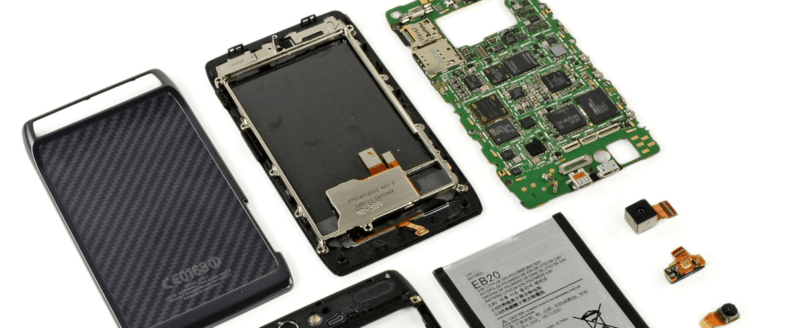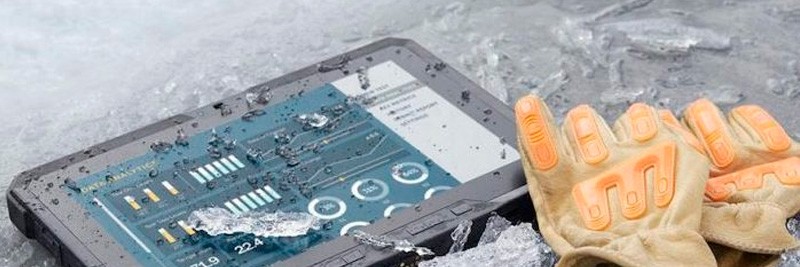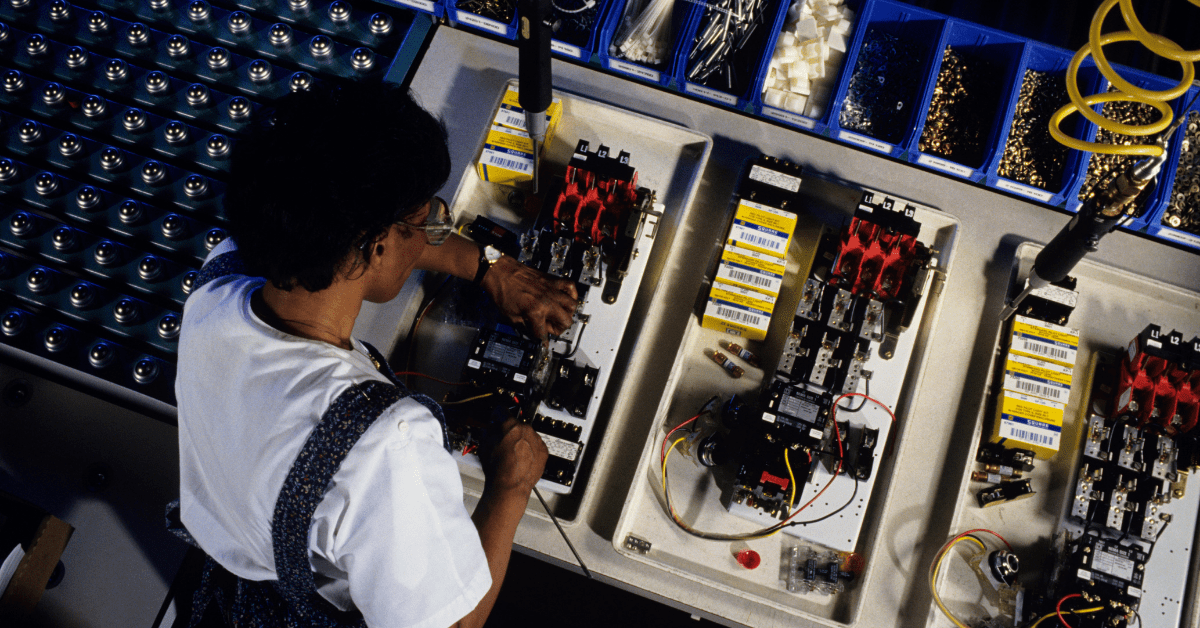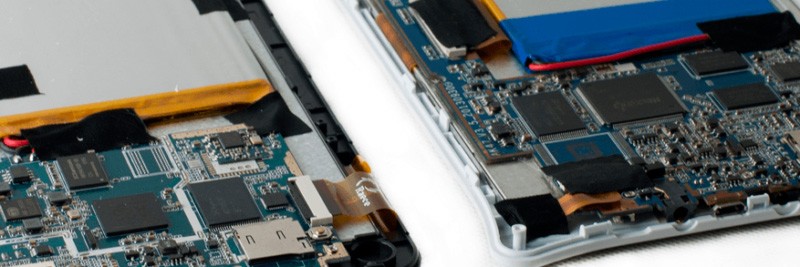Take a look at the different stages and methods of rugged tablet testing, with a special focus on custom Android tablets, smartphones, and devices.
Continue readingThe 8 Steps of Rapid CNC Prototyping Process For Smartphones And Tablets
Take a look at the different stages of rapid CNC prototyping inside an actual prototype factory in Shenzhen. Visualize the process through GIFs and photos that show how each process will typically look.
Continue readingHardware Manufacturing: 3 Important Issues to Consider for Your Startup
Considering to get into hardware manufacturing? Here are 3 Important Points for Your Startup to Consider.
Continue readingShenzhen, Manufacturing Hub Of China
Shenzhen, the manufacturing hub of China, where companies go to make a fortune or lose millions. Learn the many advantages of establishing a business in this busy tech city.
Continue readingThe Integration Company
What is an Integration Company
An integration company sometimes known as a system integrator integrates the complete supply chain solution and, in the smartphone industry, has their own casing designs.
An integration company will work with a client from the beginning of a project as early as the initial R&D stages and take responsibility for putting together the details of the project for a client. An integration company also designs their own products and then offers those products to clients ‘off the shelf’ with no further development work required. They will work with the client on all aspects of development from packaging design to individual component pricing to shipping and basic branding and marketing strategy.
An integration company will simultaneously work on development and manufacturing which can speed up time to delivery. Through a better understanding of design for manufacturing, a integration company can quickly turn concepts into scalable mass production at the best possible price. With an extra layer of quality control from the integration company, assembly factories are forced to make more effort to produce higher quality products because there is an additional level of checking before the goods can ship.
Overall an integration company bring together all the elements of the supply chain to give a client tight control of price and quality with fewer barriers compared to what they might otherwise find going it alone.
Smartphone Manufacturing: The 4 Essential Steps

Step 1: Integrated Circuit
The linchpin within any cell phone or smart device supply chain is the Integrated Circuit or IC company.
IC companies develop and manufacture the processors, SoCs (System on a Chip) and chipsets which run the devices and are the brains of the machine.
IC companies are able to dictate what happens within this industry by when and what sort of chips they produce. This is where you will begin when you first look to develop a Smartphone.
A couple times a year each IC company will release new processor chips and SoCs, which are compact chipsets designed for smart devices.
An SoC is made up of a processor core, the graphics chipset, the RAM and possibly ROM as well. SoCs are designed to save space and improve performance by grouping all the critical components on a device in one small area.
With the release of a new SoC, you will see better performance and altered configurations which will drive down the cost of the previous models or offer a higher performance model with new features; this evolution drives the high-end Smartphone market.
There are only a handful of IC companies in the world who develop for Smartphones, so when considering what chipset you want there are only a small number of questions that need to be asked, mainly price vs. performance.
Step 2: PCBA
After a new Processor chip or SoC has been released, the IC company will subsequently release PCBA reference designs so engineering companies can use them to design PCBA layouts.
The engineering company will produce a selection of PCBA layouts which are tested and proven stable to offer to their clients.
This foresightedness saves time and money and allows other key manufacturers in the next stages of the supply chain to use these standardized PCBAs to further reduce time and cost with preplanned designs.
Once you have selected an IC company and chipset you have the option to work on designing a custom PCBA or to choose a predesigned board; this will all depend on a variety of factors but the reality is there is a valid reason why most companies choose to use predesigned boards to save the time.
Step 3: Manufacturing
Integration Company
At this stage the integration company begins to get involved. This key player will be working with the client from the initial concept design up until the end of the production process managing all aspects of the sourcing, development and assembly of the phone.
It is paramount that you work with a well-managed integration company to assist with your project. Their efficient management of the supply chain allows for the lowest possible prices and the fastest production times.
Casing Design
Once a PCBA has been designed, integration companies will get involved to develop cases to fit their specific dimensions. The benefit of working with a standardized PCBA becomes apparent since integration companies can offer predesigned cases for the standardized PCBAs.
Even if the aesthetic design of your case is slightly different, the interior structure can remain the same so you can save on development cost and save time on the overall production.
Hardware Development
While the casing is being produced the integration company continue to work on the development of the remainder of the hardware.
This can become complex and timely as there are still many remaining components to be integrated into the phone with some needing further development.
These including: speaker, mic, ear piece, vibration motor, antenna, touch panel, screen, packaging, accessories, and battery.
Supply Chain Management
All the remaining components for the phone will have separate suppliers and factories and warrant strong relationships to take advantage of the best pricing.
The integration companies experience allows them to build long term relationships with suppliers and exploit this time and time again with ever new client.
The integration companies are able to coordinate all these suppliers and deliver the components to the assembly factories to begin the production.
Step 4: Assembly
Once all of the individual components have reached the assembly factory it is then down to the them to start producing the phone at the most efficient rate possible.
This will all be overlooked by the client through the eyes of the integration company who manage an issue that arises with assembly.
The assembly factory break down there process into two main stages, the trial production where they test their efficiency and the compatibility of all the components and finally to mass production where they start to produce the phone in large bulk quantities ready to be shipped to its final destination.
Why Chinese Manufacturing Has The Edge

The Supply Chain
There has been a great deal of media interest in the idea that manufacturing in China is starting to become less appealing to Western companies. There has been speculation that wage cost advantages will gradually erode and that perceptions of poor quality and business environments will drive production back home.
What this speculation fails to take into account, however, is one of the main advantages that China holds; something which is unaffected by any of these factors – the proximity of the supply chain. What many people think of as ‘manufacturing’ is more along the lines of assembly – the individual components are manufactured separately, possibly in many different factories, and then assembled into the finished product by another manufacturer.
It’s not just assembly work that has been outsourced around the world; it’s also the individual component production. Now, it’s true to say that not all of that production has moved to China, but it’s also worth recognizing that the vast majority of components are produced in Asia. South Korea and Taiwan have made big gains based on successful production of components and even countries like Thailand and Malaysia have started to get in on the act.
China also has many factories dedicated to component manufacture and this is where one of the key advantages comes from for Chinese companies. If manufacturing moves back to the West, it means that assembly will move back first. This puts Western organizations at a huge disadvantage, particularly in the United States, because it places them a long way from the companies that will make the components for their products.
In terms of production times, this may be a fatal error. If a Shenzhen based manufacturer buys its components locally and there’s a problem, it’s easy to instigate return processes. It’s also cheap in terms of logistics as the goods don’t have to move very far to be returned. A face-to-face meeting enables problems to be overcome quickly with the minimum amount of disruption to the deadlines for delivery.
For an American manufacturer they’ll need to be able to communicate at a local level with their component providers and deal with all of the associated language and cultural barriers. Then they’ll need to ship their returns overseas back to Asia (which is expensive and time consuming in itself). They’ll have to hope that the supplier understands their issue and is willing to remedy it quickly, which they may or may not be willing to do without a whole heck of encouragement. And then they have to wait for the next shipment to arrive – costing more time, more money – before they can test to see if the problem has actually been resolved.
Another factor to consider is that the wage differentials aren’t as close as those reported in the media. The figures for median and average wages in Chinese manufacturing aren’t anywhere near as high as those shown in some of the figures claimed in Western media. But even if they were, Chinese manufacturers have a serious competitive edge in their proximity to the supply chain – one that the West would need decades to overcome.
So the bottom line is, don’t bet the farm on a manufacturing exodus from China any time soon.
SZCEIT can help you come to an understanding of how manufacturing your products in China can save you time and money while maintaining the quality your customers have come to expect from your brand.
Don’t Write China Off Just Yet

Will Manufacturing Return to the West?
On reading his obituary in the New York Journal, Mark Twain quipped, “Reports of my demise have been greatly exaggerated.” China may soon find itself having to make statements of a similar nature. Commentators in the West have been excitedly predicting that manufacturing will return to the West as costs rise in China.
It is true that labor costs are rising in China, and have been for a number of years, but does that automatically mean that companies will suddenly up sticks and come running back to produce goods in Europe and the United States?
We don’t think so and here’s our list of reasons why:
- Abundance of low cost product development in China – China’s universities are dedicated to churning out skilled engineers of all disciplines to support their factory-based economy. Over in the West engineering skills have long been in decline, and that skillset can’t be rebuilt overnight.
- Experience matters – China is the world’s manufacturer, every town and city has an industrial base or bases and that means there’s a large experienced workforce waiting to be called-up; the West simply doesn’t have this level of expertise anymore and it won’t be easy to “poach” Chinese experience because most Chinese factory workers don’t speak a word of English and most Western factory managers won’t have spent their time learning Mandarin.
- Inefficiency – Unlike Western and Japanese companies, China is still yet to undergo its “quality revolution” which, when it comes, will enable cost savings at all levels of manufacturing and take Chinese products to the next level in consumers’ eyes.
- Wage models – The data supplied in the current predictions of manufacturing returning to the West is suspect at best, it usually refers to “skilled labor” and as much of manufacturing runs on “unskilled labor” it puts a very positive slant on the distribution of income. Some reports have put Chinese labor costs at only half of American or European labor costs – in that case they’re going to be disappointed to learn that the majority of workers in Chinese factories earn around $250 USD a month and that’s more like 1/8th of the cost of labor in the West.
Even if the predictions were true, and Chinese manufacturing was suddenly to become cost-ineffective when compared to the West, what is the likelihood that manufacturers would return en-masse to producing products in Europe and the United States? Given that labor costs in other developing nations are still extremely low, isn’t it more likely that those jobs would move on to Cambodia, Vietnam, Thailand, Bangladesh etc?
At SZCEIT we approach client’s manufacturing needs rationally and, at the moment, the costs of Chinese manufacturing are more competitive than in the West; quality can be easily achieved if you have the right relationships with the producers and that means big advantages for you and your customers.





